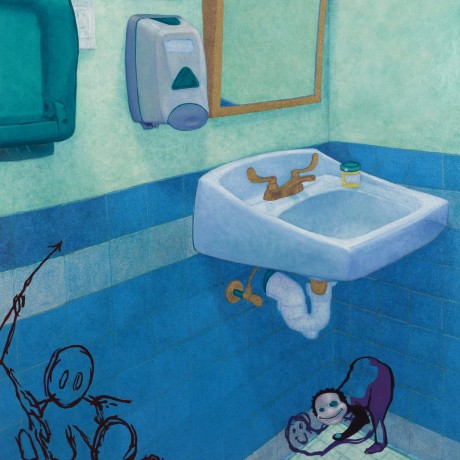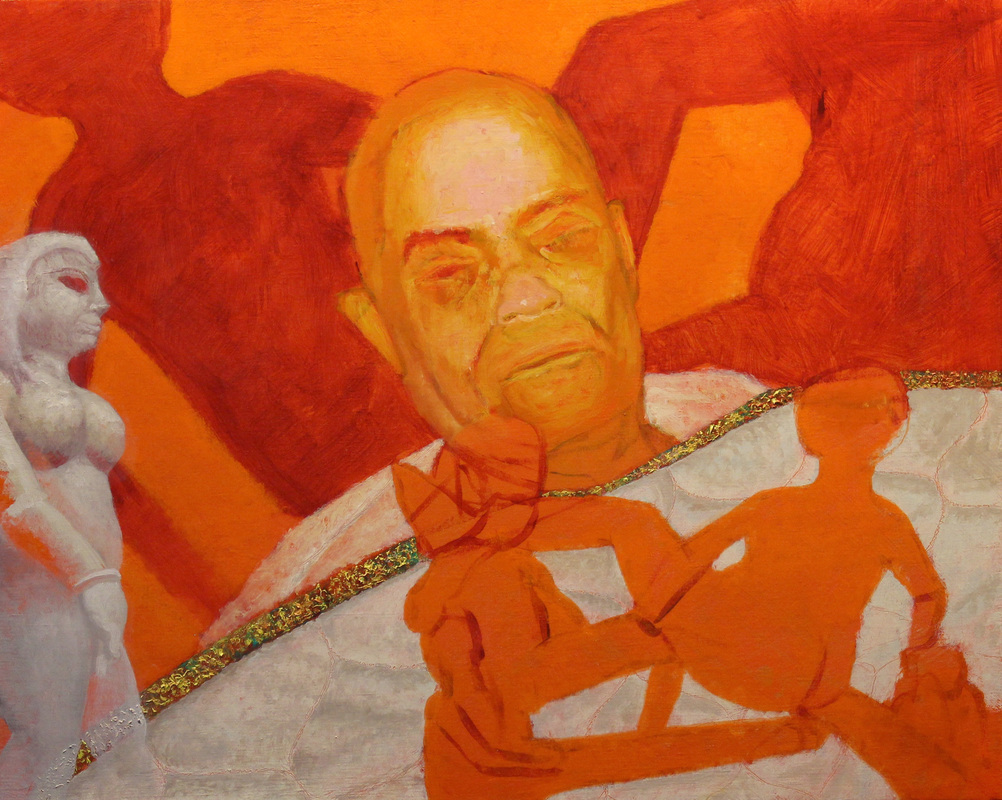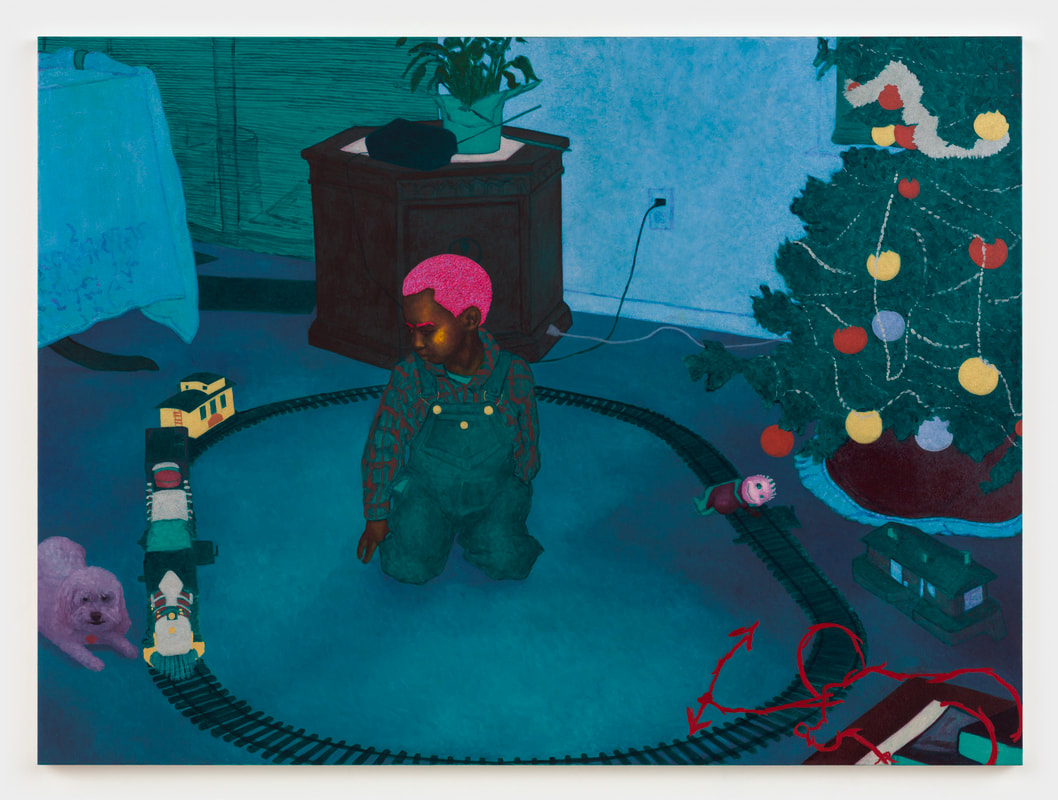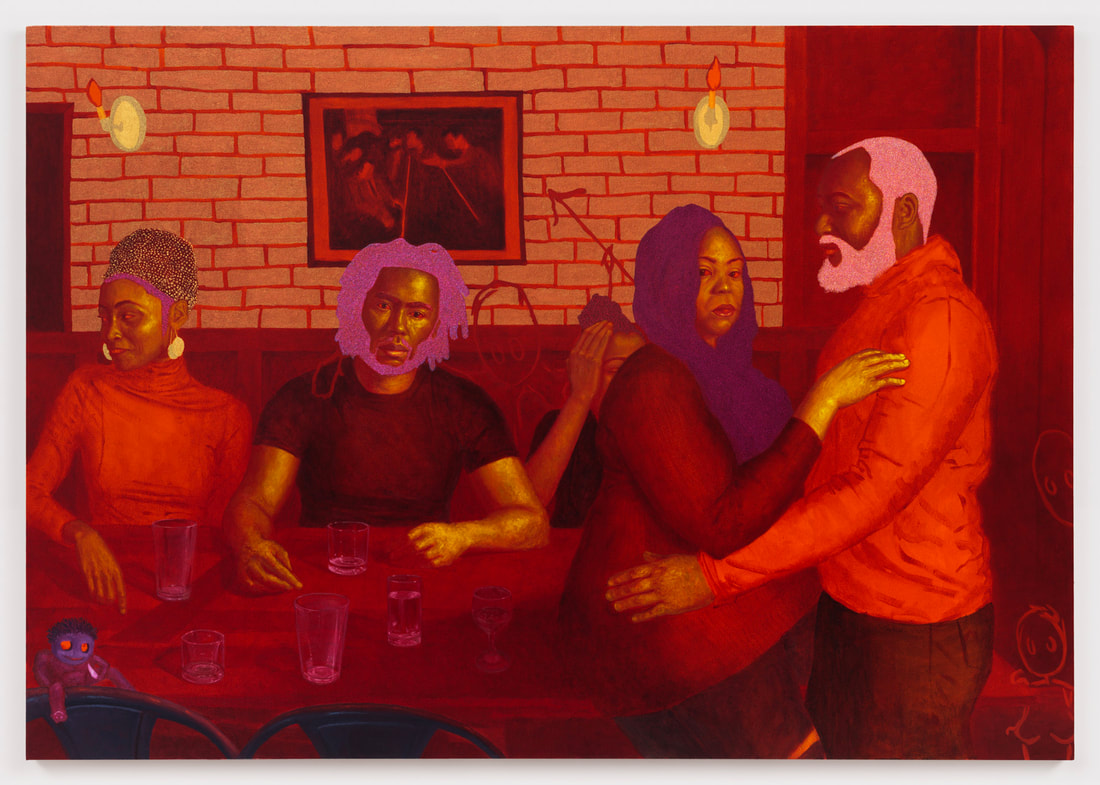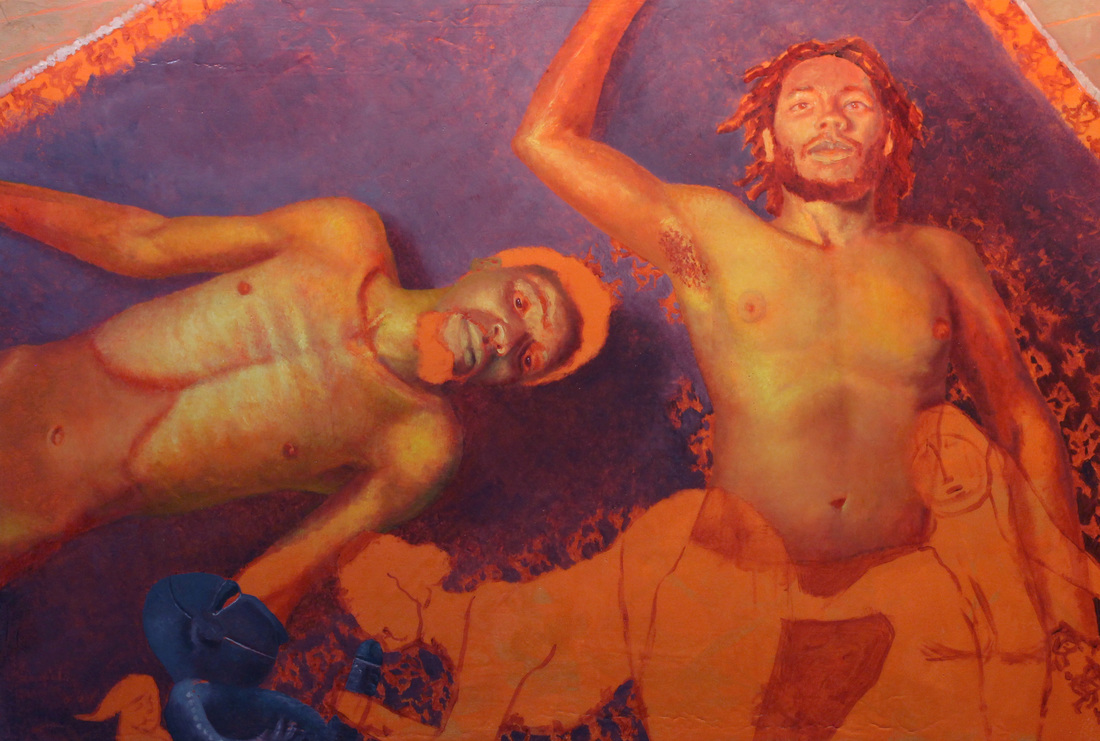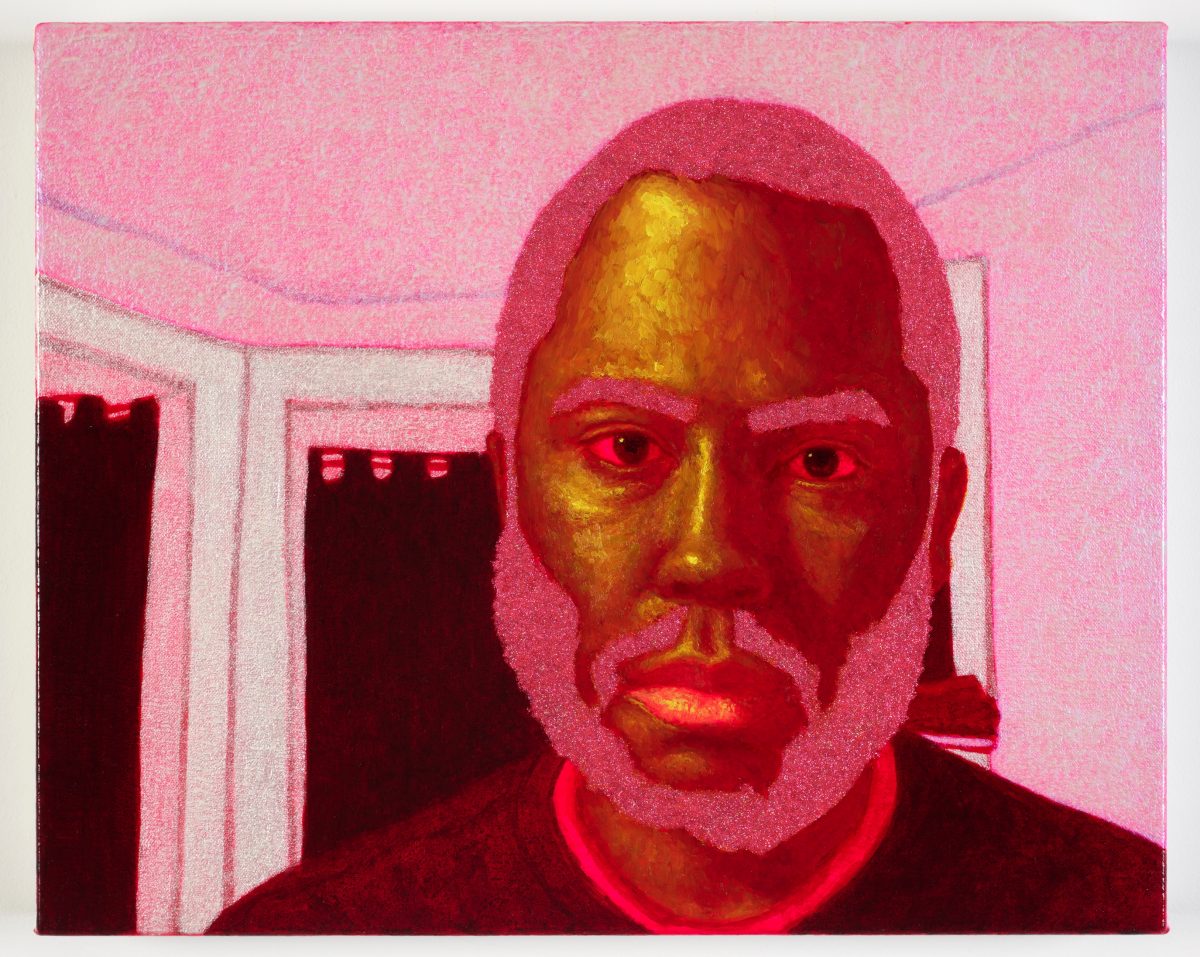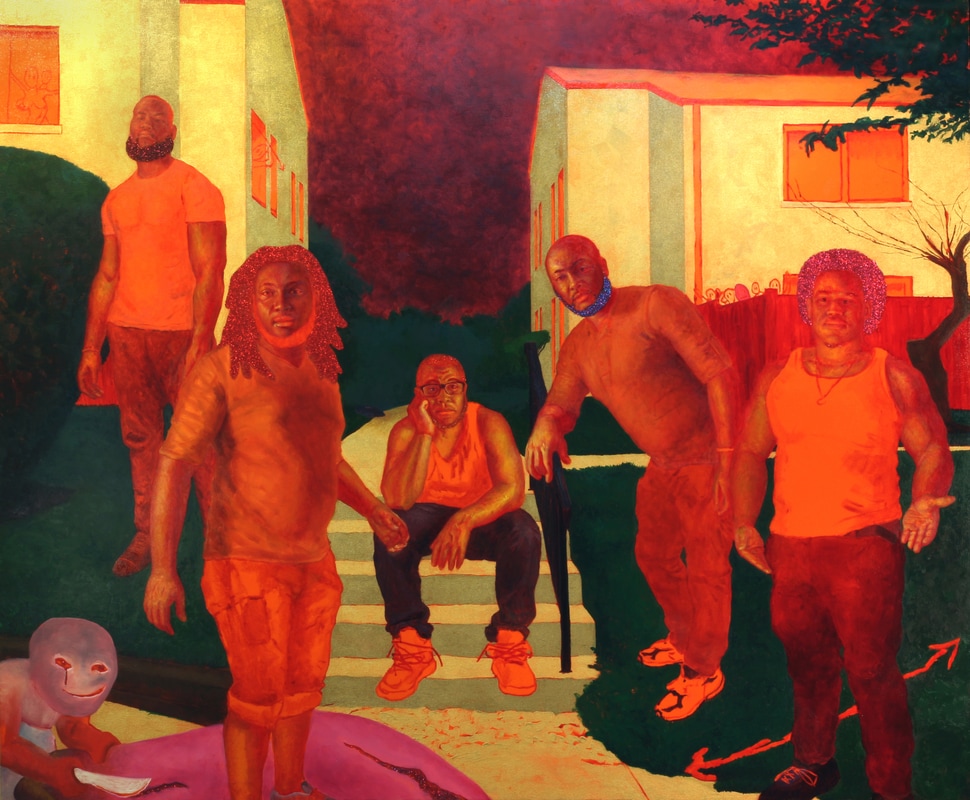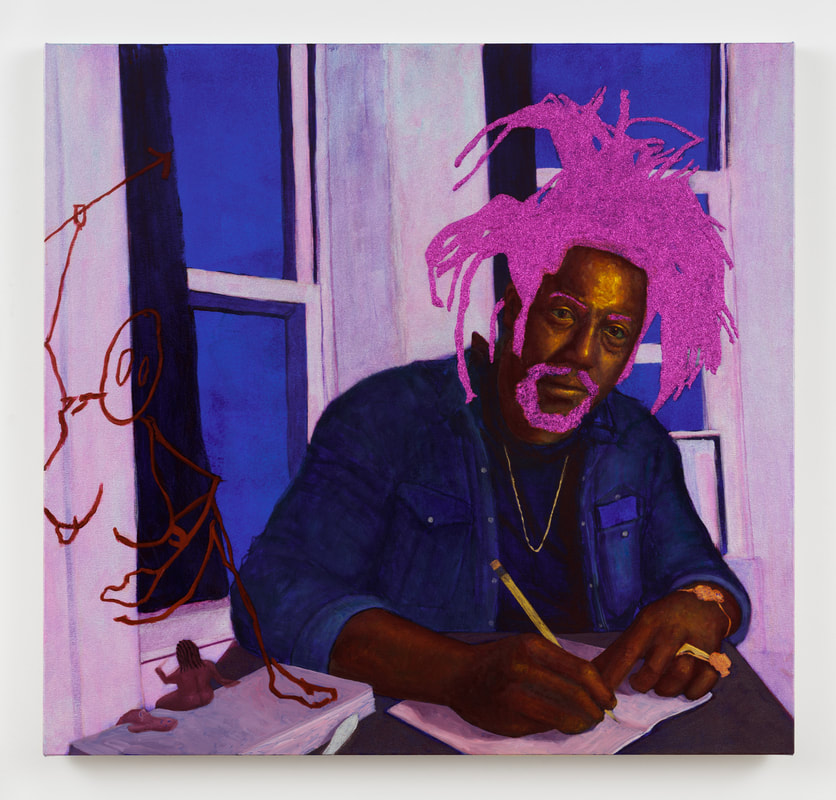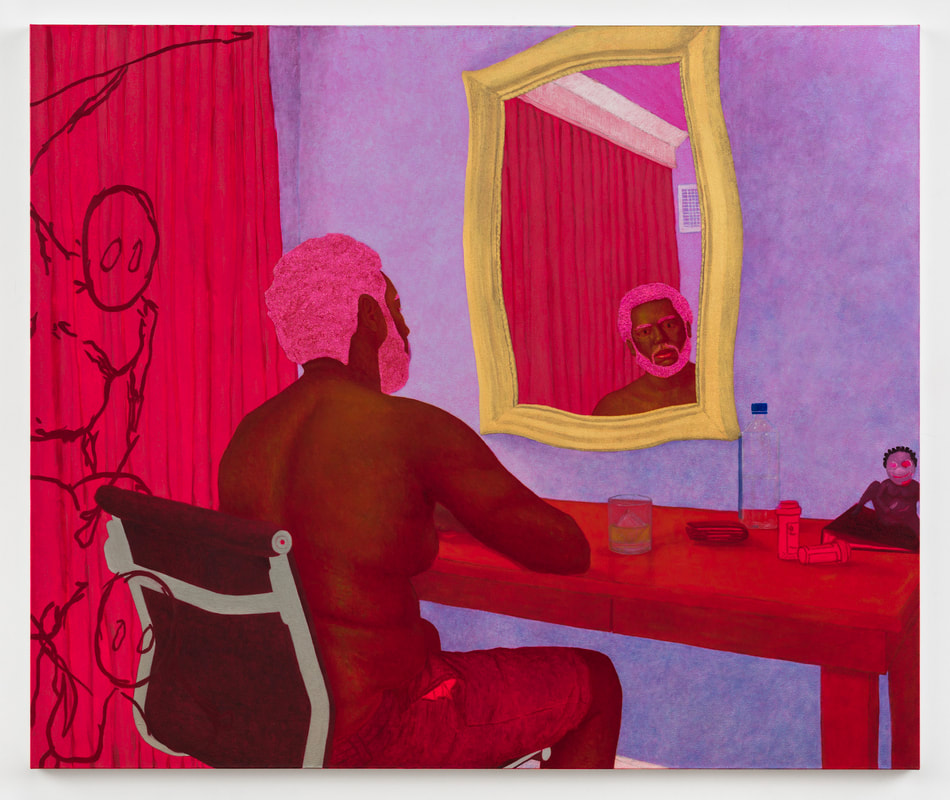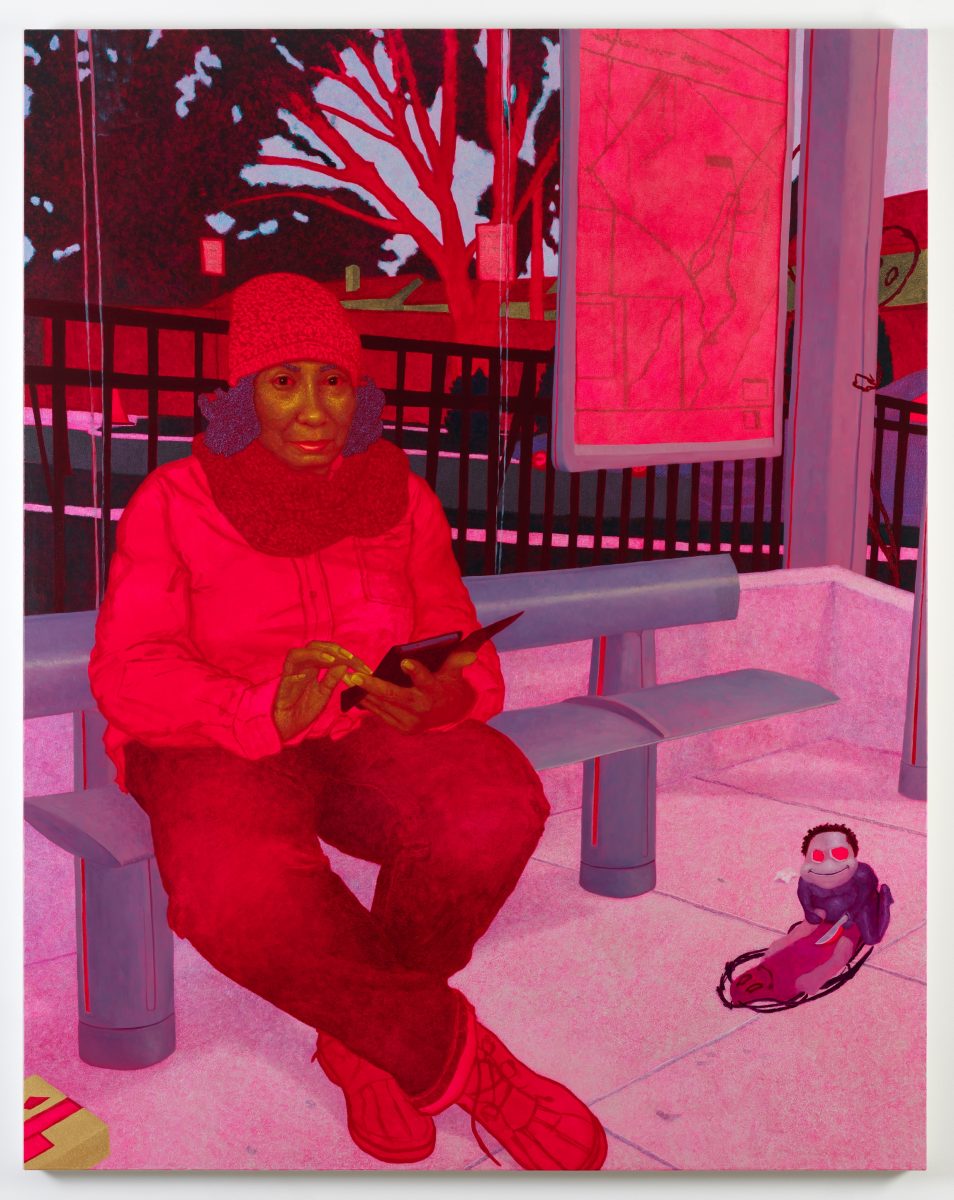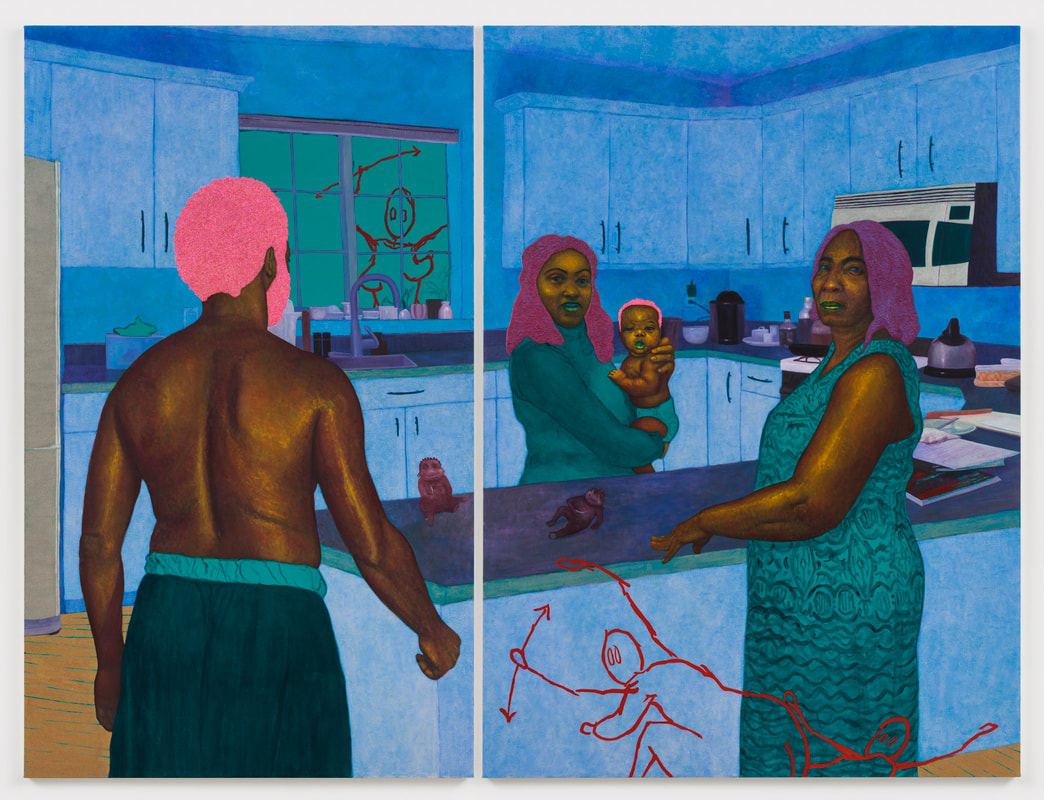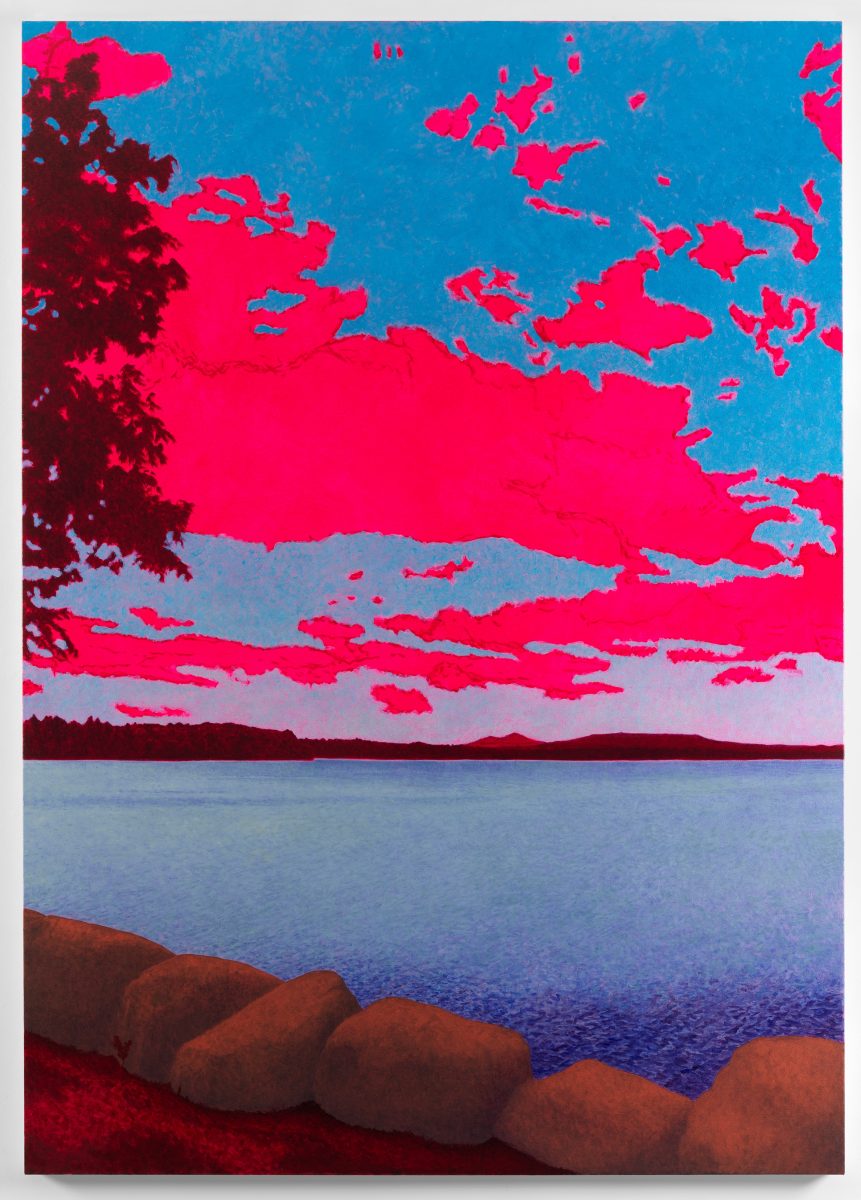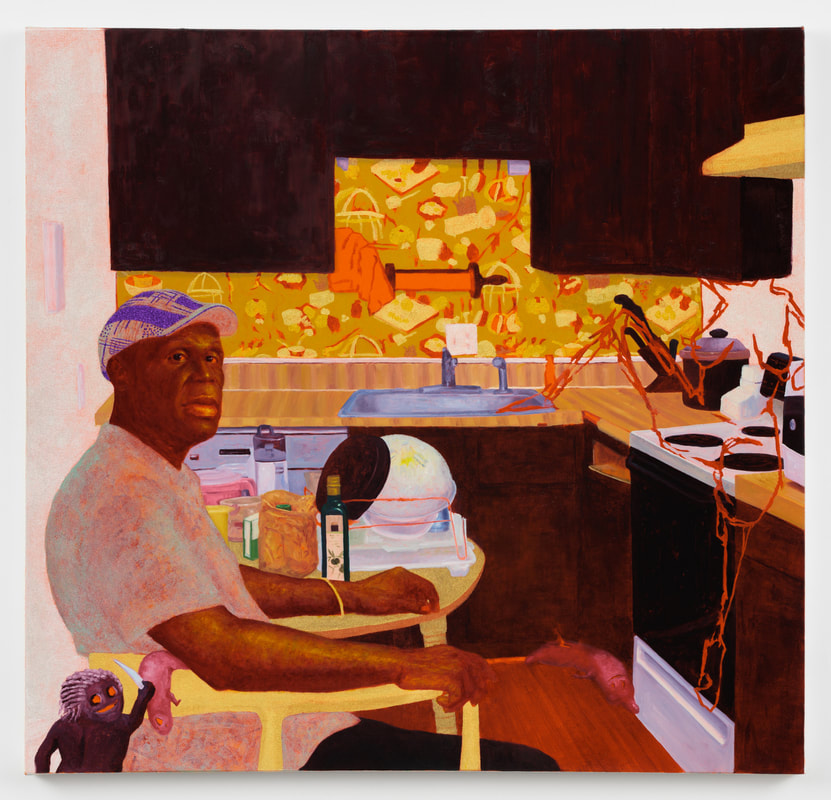
When
Arcmanoro Niles was a young boy, he would watch quietly as his father and grandfather went about their daily lives, wondering how and why different scenarios shaped their behaviours. Certain scenes left a strong impression for their serene, nostalgic quality: walking into the kitchen and seeing his grandfather hunched close to a radio, drink in hand. Others raised deeper questions around family, responsibility and Black masculinity, which for the last decade have found expression in his painting.
Much of Niles’ recent work explores this coming-of-age experience. As an adult Niles, who was born in Washington DC in 1989, strives to recreate, and to an extent reinhabit, the domestic settings whose behavioural codes once so perplexed him. In the 2019 series, I Guess By Now I’m Supposed to be a Man: I’m Just Trying to Leave Behind Yesterday, Niles imbues bedroom and bathroom scenes with an atmosphere of restless, almost febrile excitement, his use of glitter and close studies of direct stares lifting his subjects into another realm. Often working from photographs, he sets out to explore his family and peers’ generative rituals: playing in the park, a garden party with friends, being affectionate in public.
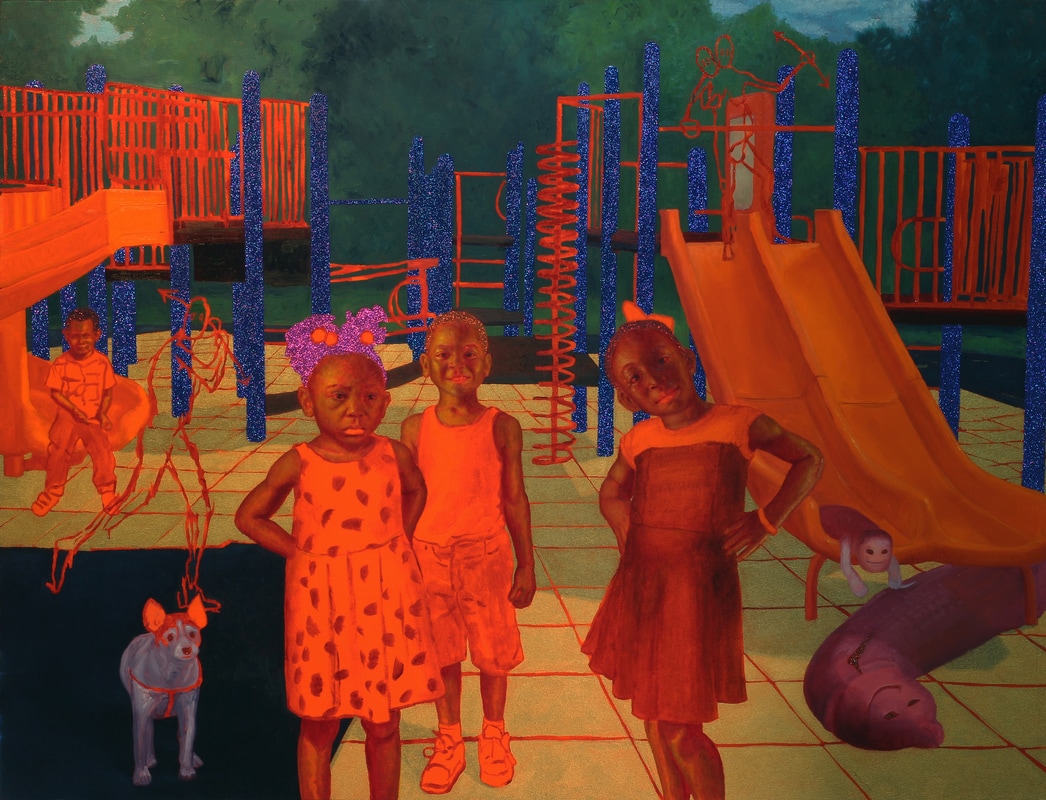
In
Show Me I’m Not Shattered (Try To Ignore The Elephant Somehow), the skin of a couple has a bronze hue against the uniform turquoise of their clothes and linen, anticipating an intimate encounter between them. The man’s stare, like those of the people in Niles’ 2018 painting Go Home to Nothing (Hoping for More), suggests the artist’s own intrusion, but the implications of his gaze remain ambiguous. When we speak over the phone, Niles says that the latter painting responded to a more playful scenario, being at a bar and wondering whether or not you’re having a good time, wondering if it would be worth staying a little longer in the hope that the night improves.
“I was always interested in colour,” Niles says. “Always trying to pull together all these colours that I saw, or thought I saw, in my darker flesh: bright reds, deep purples and golden tones.” With painterly influences ranging from Caravaggio to Rothko, Niles initially used a red base before adding browns to balance skin tones. Around 2015, he realised that he could reduce the application of darker shades, allowing reds, oranges and yellows to perform shadowing and textural roles.
“I was always interested in colour. Always trying to pull together all these colours that I saw in my darker flesh”
“I used to listen to Kerry James Marshall talk about how he would make his blacks as black as they could be, but within that there were different ranges of colour,” he explains. Marshall’s influence allowed Niles to crystallise his own method, which often betrays his classical training from both the Pennsylvania Academy of Fine Arts and New York Academy of Art. Take the small, gargoyle-like figures that pepper his work, for example: they started off as assignment studies of Egyptian fertility sculptures from the Brooklyn Museum.
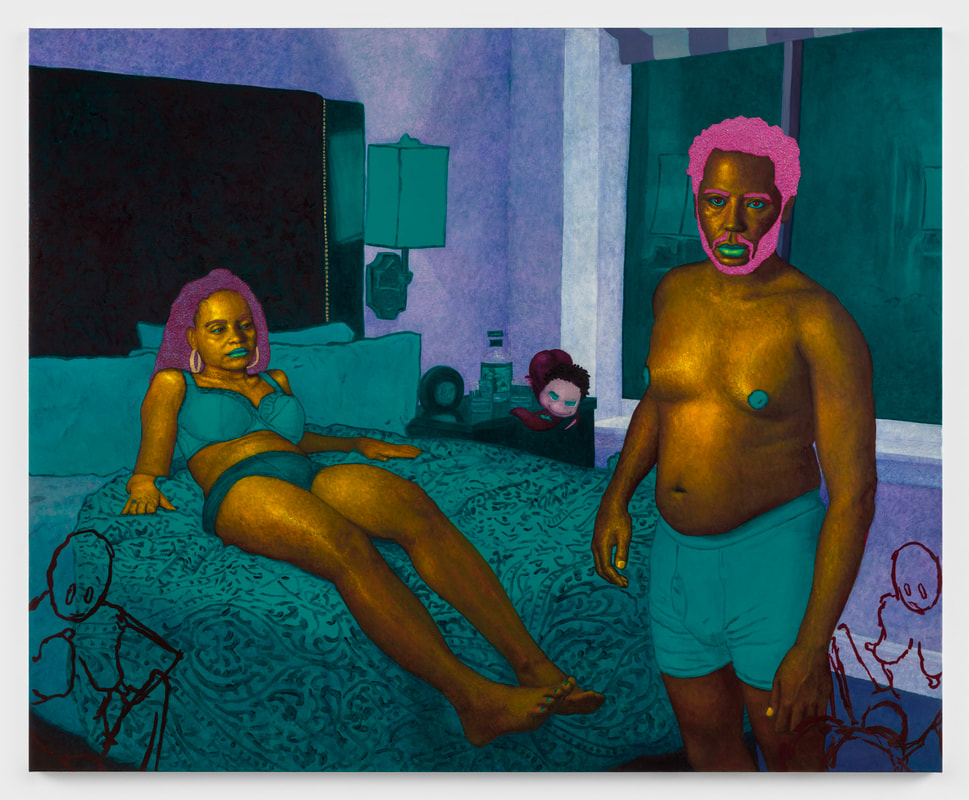
Niles’ new exhibition at Lehmann Maupin, New York City, draws on his observational style, but is more oriented towards perceptions of failure that haunt everyday activity. Informed by his own difficulty in securing opportunities after graduate school, he began “looking at different moments that people might perceive as failures but really aren’t,” exploring prejudices against employment and lifestyle choices.
It represents a development in his practice, but not necessarily a pessimistic one. The title work, Hey Tomorrow, Do You Have Some Room For Me (Failure is a Part of Being Alive), is Niles’ first professional landscape painting, a hopeful scene of bright red clouds stretching into a powdery horizon. “I’ve grown more confident with trusting myself,” he says. “Doing what feels right, rather than what’s there in the photos.”
All images courtesy the artist and Lehmann Maupin
Arcmanoro Niles, Hey Tomorrow, Do You Have Some Room For Me (Failure Is A Part Of Being Alive)
At Lehmann Maupin, New York City, 3 June-28 August
VISIT WEBSITE